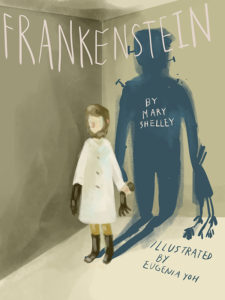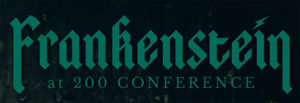
A popular fruit-flavored breakfast cereal marketed to children (Frankenberry); John Milton’s “Paradise Lost”; Donald Trump’s unlikely adoption by the Republican Party; scary Halloween masks; concerns regarding global warming; horror films; fears about human cloning; contemporary notions of Otherness; unbridled scientific hubris; Black Lives Matter; atheism; Adam and Eve; feminist theory; Herman Munster; camp musicals like “Young Frankenstein” and “The Rocky Horror Picture Show”; cartoons, comics, graphic novels — these are some, but far from all, of the associations we may have with the central myth of the past 200 years: Frankenstein.
Brought to life by a 19-year-old girl, the myth of Frankenstein has grown in popularity and significance ever since its remarkable birth at a ghost story contest held at the Villa Diodati near Lake Geneva in 1816. Young Mary Shelley was unable to sleep after listening to a group of men (including the poets Lord Byron and Percy Bysshe Shelley, the latter with whom she had recently eloped) discuss means of reanimating life from dead tissue. She had attended their conversation about electrical impulses and galvanic piles as a “devout but nearly silent listener,” and, as she lie in bed, began to conceive her terrifying tale in a drowsy state of half-dream, half-wakefulness: “I saw the pale student of unhallowed arts kneeling beside the thing he had put together. I saw the hideous phantasm of a man stretched out, and then, on the working of some powerful engine, show signs of life, and stir with an uneasy, half vital motion.”
Now, 200 years after the novel’s publication in 1818, we still employ Mary Shelley’s dream vision to interpret and explain our world today — but why? Perhaps because the troubling dialectic between Creator and Monster reflects some basic anxiety that has still not been resolved.
Read more of Henry Schvey’s essay here.
 Join Schvey and other scholars for a daylong conference “Frankenstein at 200,” beginning at 8:30 a.m. on Friday, Oct. 13, in Umrath Hall. Hosted by the Center for the Humanities in Arts & Sciences, the conference brings together scholars from several universities and disciplines, including history, philosophy, fine arts, literature, Africana studies and performing arts. It is free and open to the public. More information is available here.
Join Schvey and other scholars for a daylong conference “Frankenstein at 200,” beginning at 8:30 a.m. on Friday, Oct. 13, in Umrath Hall. Hosted by the Center for the Humanities in Arts & Sciences, the conference brings together scholars from several universities and disciplines, including history, philosophy, fine arts, literature, Africana studies and performing arts. It is free and open to the public. More information is available here.
Comments and respectful dialogue are encouraged, but content will be moderated. Please, no personal attacks, obscenity or profanity, selling of commercial products, or endorsements of political candidates or positions. We reserve the right to remove any inappropriate comments. We also cannot address individual medical concerns or provide medical advice in this forum.